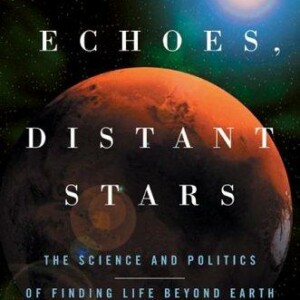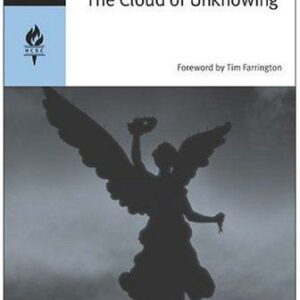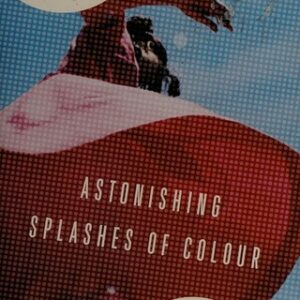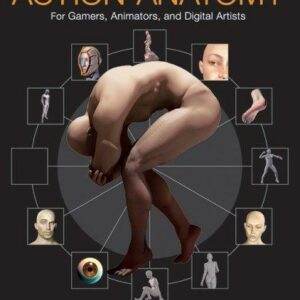An Immense World
$25.95
| Title | Range | Discount |
|---|---|---|
| Trade Discount | 5 + | 25% |
- Description
- Additional information
Description
NEW YORK TIMES BESTSELLER
WINNER OF THE ANDREW CARNEGIE MEDAL FOR EXCELLENCE
NAMED A TOP TEN BEST BOOKS OF THE YEAR BY
The New York Times ● The Wall Street Journal ● TIME ● People ● Slate ● The Philadelphia Inquirer ● Reader’s Digest ● Outside ● Publishers Weekly ● BookPage
NAMED A BEST BOOKS OF THE YEAR BY
The Globe and Mail ● Oprah Daily ● The New Yorker ● The Washington Post ● The Guardian ● Smithsonian Magazine ● Mental Floss ● Kirkus Reviews ● Library Journal
A thrilling tour of the radically different ways that animals perceive the world that will fill you with wonder and forever alter your perspective, by Pulitzer Prize–winning science journalist Ed Yong.
The Earth teems with sights and textures, sounds and vibrations, smells and tastes, electric and magnetic fields. But every animal is enclosed within its own unique sensory bubble, perceiving but a tiny sliver of an immense world. This book welcomes us into a previously unfathomable dimension—the world as it is truly perceived by other animals.
We encounter beetles that are drawn to fires, turtles that can track the Earth’s magnetic fields, fish that fill rivers with electrical messages, and humans that wield sonar like bats. We discover that a crocodile’s scaly face is as sensitive as a lover’s fingertips, that the eyes of a giant squid evolved to see sparkling whales, that plants thrum with the inaudible songs of courting bugs, and that even simple scallops have complex vision. We learn what bees see in flowers, what songbirds hear in their tunes, and what dogs smell on the street. We listen to stories of pivotal discoveries in the field, while looking ahead at the many mysteries which lie unsolved.
In An Immense World, author and acclaimed science journalist Ed Yong coaxes us beyond the confines of our own senses, allowing us to perceive the skeins of scent, waves of electromagnetism, and pulses of pressure that surround us. Because in order to understand our world, we don’t need to travel to other places; we need to see through other eyes.“A thrilling tour of nonhuman perception . . . Nature’s true wonders aren’t limited to a remote wilderness or other sublime landscape. . . . There is as much grandeur in the soil of a backyard garden as there is in the canyons of Zion.” —The New York Times
“A dazzling ride through the sensory world of astoundingly sophisticated creatures . . . It’s Mr. Yong’s task to expand our thinking, to rouse our sense of wonder, to help us feel humbled and exalted at the capabilities of our fellow inhabitants on Earth. . . . [A] deeply affectionate travelogue of animal sensory wonders.” —The Wall Street Journal
“My favourite kind of book right now explains, with clarity and humour, how the world works, and no one is better at this than science writer Ed Yong. . . . An Immense World restores our wonder to animals—by describing the very different sensory worlds they inhabit. . . . Each page is a peek inside hidden alcoves, suddenly available.” —Chicago Tribune
“Yong isn’t just reconciling science writing and storytelling in this book. He’s making a new form, one with deep roots in American magazine writing and growing towards a more interdisciplinary future. . . . [An Immense World] has helped me to witness forms of beauty I had no idea existed.” —National Book Critics’ Circle
“One of this year’s finest works of narrative nonfiction . . . Yong’s reporting is layered, seasoned with vivid scenes from laboratories and in the field, interviews with researchers across a spectrum of disciplines.” —Oprah Daily
“Yong is an amazing interlocutor, puzzling through the mysteries of [the animal world] with plenty of anecdotes from his own reporting, from the informative to the downright entertaining. His writing invites us to delight in the world and the tools we use to understand it. . . . It’s hard to overstate just how good Ed Yong is.” —Literary Hub
“An Immense World takes you into the fascinating realm of animal sense. . . . If . . . your soul needs a break—and some damn joy—An Immense World is a trip worth taking.” —Mother Jones
“A delight. . . . [An Immense World] prompts a radical rethink about the limits of what we know—what the world is, even. It is quite a book. And, I felt, putting it down, quite a world.” —The Times (UK)
“A powerful and immersive deep dive into the perceptual lives of other organisms—and a persuasive case for more empathy and understanding of the complexity, sophistication, and sheer riotous joy of the nonhuman world—it’s an instant classic.”—Jeff VanderMeer, author of Authority
“I don’t know how to put into words the awe I felt while reading this book—for the incredible sensory diversity of our planet, and for Ed Yong’s talents.” —Mary Roach, author of Stiff
“There is almost no writer I admire as much as I do Ed Yong. He’s an extraordinary reporter and a writer of such grace that his work seems effortless. An Immense World is a journal of discovery and animal magic, and a sensory exploration that is a joy to read.”—Susan Orlean, author of On Animals
“What would we do without Ed Yong? This book feels like a tremendous burst of oxygen, animating everything around us with life and color and texture and wonder at precisely the moment we all need it.”—Rebecca Skloot, author of The Immortal Life of Henrietta Lacks
“An Immense World is an expansive, constantly revelatory exploration of the biosphere’s sensorium, from the rigidly pheromonic behavioral programming of ants to the constant subsonic conversations of elephants. Ed Yong is my favorite contemporary science writer.”—William Gibson, author of Agency
ED YONG is a Pulitzer Prize-winning science writer on the staff of The Atlantic, where he also won the George Polk Award for science reporting, among other honours. His first book, I Contain Multitudes, was a New York Times bestseller and won numerous awards. His work has appeared in The New Yorker, National Geographic, Wired, The New York Times, Scientific American, and more. He lives in Washington, D.C.1.
Leaking Sacks of Chemicals
Smells and Tastes
“I don’t think he’s been in here before,” Alexandra Horowitz tells me. “So it should be very smelly.”
By “he,” she means Finnegan—her ink-black Labrador mix, who also goes by Finn. By “here,” she means the small, windowless room in New York City in which she runs psychological experiments on dogs. By “smelly,” she means that the room should be bursting with unfamiliar aromas, and thus should prove interesting to Finn’s inquisitive nose. And so it does. As I look around, Finn smells around. He explores nostrils—first, intently sniffing the foam mats on the floor, the keyboard and mouse on the desk, the curtain draped over a corner, and the space beneath my chair. Compared to humans, who can explore new scenes by subtly moving our heads and eyes, a dog’s nasal explorations are so meandering that it’s easy to see them as random and thus aimless. Horowitz thinks of them differently. Finn, she notes, is interested in objects that people have touched and interacted with. He follows trails and checks out spots where other dogs have been. He examines vents, door cracks, and other places where moving air imports new odorants—scented molecules. He sniffs different parts of the same object, and he’ll sniff them at different distances, “like he’s approaching the Van Gogh and seeing what the brushstrokes look like up close,” says Horowitz. “They’re in that state of olfactory exploration all the time.”
Horowitz is an expert on dog olfaction—their sense of smell—and I’m here to talk with her about all things sniffy and nasal. And yet, I’m so relentlessly visual that when Finn finishes nosing around and approaches me, I’m instantly drawn to his eyes, which are captivating and brown like the darkest chocolate. It takes concerted effort to refocus on what’s right in front of them—his nose, prominent and moist, with two apostrophe-shaped nostrils curving to the side. This is Finn’s main interface with the world. Here’s how it works.
Take a deep breath, both as demonstration and to gird yourself for some necessary terminology. When you inhale, you create a single airstream that allows you to both smell and breathe. But when a dog sniffs, structures within its nose split that airstream in two. Most of the air heads down into the lungs, but a smaller tributary, which is for smell and smell alone, zooms to the back of the snout. There it enters a labyrinth of thin, bony walls that are plastered with a sticky sheet called the olfactory epithelium. This is where smells are first detected. The epithelium is full of long neurons. One end of each neuron is exposed to the incoming airstream and snags passing odorants using specially shaped proteins called odorant receptors. The other end is plugged directly into a part of the brain called the olfactory bulb. When the odorant receptors successfully grab their targets, the neurons notify the brain, and the dog perceives a smell. You can breathe out now.
Humans share the same basic machinery, but dogs just have more of everything: a more extensive olfactory epithelium, dozens of times more neurons in that epithelium, almost twice as many kinds of olfactory receptors, and a relatively larger olfactory bulb. And their hardware is packed off into a separate compartment, while ours is exposed to the main flow of air through our noses. This difference is crucial. It means that whenever we exhale, we purge the odorants from our noses, causing our experience of smell to strobe and flicker. Dogs, by contrast, get a smoother experience, because odorants that enter their noses tend to stay there, and are merely replenished by every sniff.
The shape of their nostrils adds to this effect. If a dog is sniffing a patch of ground, you might imagine that every exhalation would blow odorants on the surface away from the nose. But that’s not what happens. The next time you look at a dog’s nose, notice that the front-facing holes taper off into side—facing slits. When the animal exhales while sniffing, air exits through those slits and creates rotating vortices that waft fresh odors into the nose. Even when breathing out, a dog is still sucking air in. In one experiment, an English pointer (who was curiously named Sir Satan) created an uninterrupted inward airstream for 40 seconds, despite exhaling 30 times during that period.
With such hardware, it’s no wonder that dog noses are incredibly sensitive. But how sensitive? Scientists have tried to find the thresholds at which dogs can no longer smell certain chemicals, but their answers are all over the place, varying by factors of 10,000 from one experiment to another.4 Rather than focusing on these dubious statistics, it’s more instructive to look at what dogs can actually do. In past experiments, they have been able to tell identical twins apart by smell. They could detect a single fingerprint that had been dabbed onto a microscope slide, then left on a rooftop and exposed to the elements for a week. They could work out which direction a person had walked in after smelling just five footsteps. They’ve been trained to detect bombs, drugs, landmines, missing people, bodies, smuggled cash, truffles, invasive weeds, agricultural diseases, low blood sugar, bedbugs, oil pipeline leaks, and tumors.
Migaloo can find buried bones at archeological sites. Pepper uncovers lingering oil pollution on beaches. Captain Ron detects turtle nests so that the eggs can be collected and protected. Bear can pinpoint hidden electronics, while Elvis specializes in pregnant polar bears. Train, who flunked out of drug detection school for being too energetic, now uses his nose to track the scat of jaguars and mountain lions. Tucker used to hang off the bow of boats and sniff for orca poop; he has since retired, and his duties now fall to Eba. If it has a scent, a dog can be trained to detect it. We redirect their Umwelten in service of our needs, to compensate for our olfactory shortcomings. These feats of detection are worth marveling at, but they are also parlor tricks. They allow us to abstractly appreciate that dogs have a great sense of smell, without truly appreciating what that means for their inner lives or how their olfactory world differs from a visual one.
Unlike light, which always moves in a straight line, smells diffuse and seep, flood and swirl. When Horowitz observes Finn sniffing a new space, she tries to ignore the clear edges that her vision affords, and instead pictures “a shimmering environment, where nothing has a hard boundary,” she says. “There are focal areas, but everything is sort of seeping together.” Smells travel through darkness, around corners, and in other conditions that vex vision. Horowitz can’t see into the bag slung over the back of my chair, but Finn can smell into it, picking up molecules drifting from the sandwich within. Smells linger in a way that light does not, revealing history. The past occupants of Horowitz’s room have left no ghostly visual traces, but their chemical imprint is there for Finn to detect. Smells can arrive before their sources, foretelling what’s to come. The scents unleashed by distant rain can clue people in to advancing storms; the odorants emitted by humans arriving home can send their dogs running to a door. These skills are sometimes billed as extrasensory, but they are simply sensory. It’s just that things often become apparent to the nose before they appear to the eyes. When Finn sniffs, he is not merely assessing the present but also reading the past and divining the future. And he is reading biographies. Animals are leaking sacks of chemicals, filling the air with great clouds of odorants. While some species deliberately send messages by releasing smells, all of us inadvertently do so, giving away our presence, position, identity, health, and recent meals to creatures with the right noses.
“I never thought much about the nose at all,” says Horowitz. “It didn’t occur to me.” When she started studying dogs, she focused on things like their attitudes to unfairness—the kind of topic that’s interesting to psychologists. But after reading Uexküll and thinking about the Umwelt concept, she shifted her attention to smell—the kind of topic that’s interesting to dogs.
She notes, for example, that many dog owners deny their animals the joys of sniffing. To a dog, a simple walk is an odyssey of olfactory exploration. But if an owner doesn’t understand that and instead sees a walk as simply a means of exercise or a route to a destination, then every sniffy act becomes an annoyance. When the dog pauses to examine some invisible trace, it must be hurried along. When the dog sniffs at poop, a carcass, or something the owner’s senses find displeasing, it must be pulled away. When the dog sticks its nose in the crotch of another dog, it’s being indecorous: Bad dog! After all, in Western cultures at least, humans don’t smell each other. “You could give someone a hug, but if you actually sniffed them, that would be very weird,” says Horowitz. “I could say that your hair smells great, but I can’t say that you smell great, unless we’re intimate.” Time and again, people impose their values—and their Umwelt—onto their dogs, forcing them to look instead of sniff, dimming their olfactory worlds and suppressing an essential part of their caninehood. That was never clearer to Horowitz than when she took Finn to a nosework class.US
Additional information
| Weight | 13.6 oz |
|---|---|
| Dimensions | 1.0900 × 5.2600 × 7.9000 in |
| Imprint | |
| Format | |
| ISBN-13 | |
| ISBN-10 | |
| Author | |
| Audience | |
| BISAC | |
| Subjects | science gifts for adults, science gifts, Best nonfiction, animal book, books best sellers, Dog lover gifts, science book, SCI100000, new york times best sellers, stem gifts, nature books, science books for adults, biology gifts, biology book, biology books, books best sellers 2023, SCI070000, an immense world, Ed Yong, Summer reads, nature, science, biology, Animals, summer reading, animal books, pets, pulitzer prize, gifts for dad, gifts for men, gifts for women, gifts for nature lovers, zoology, natural history, wildlife, science books, nature book |











